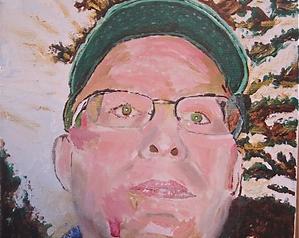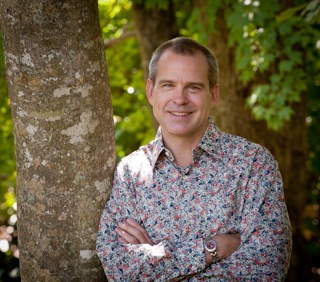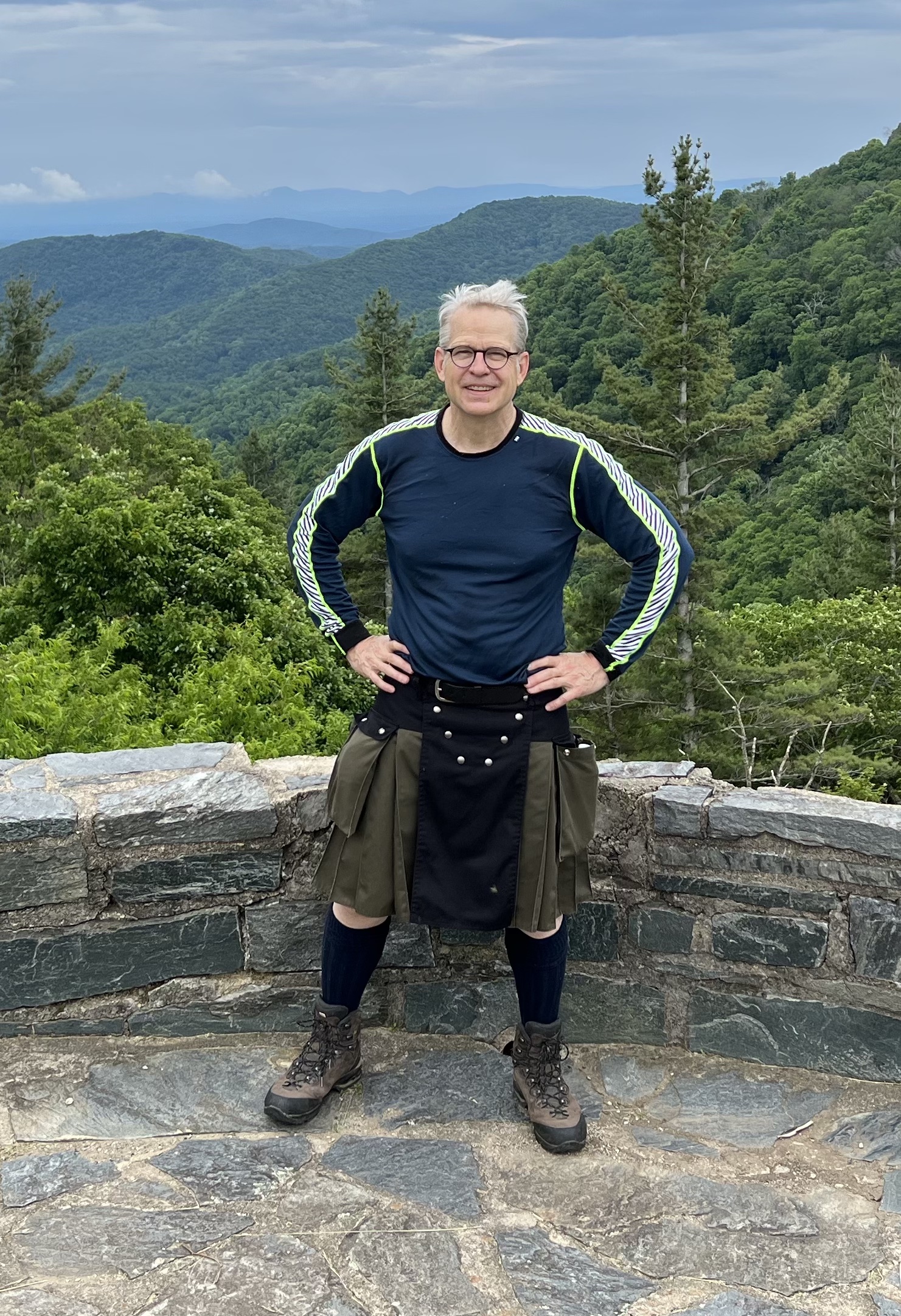St. George
Art
St. George
Art
About St. George
My name is George Spencer. I sign my paintings "St. George" because my work is divine. I slay dragons of conformity.
I'm a neoOutsider.
What's that mean?
Here in America, an Outsider artist is, for all intents and purposes, the same as a folk artist. Bottom line? It's someone who has little, if any, training. Think Grandma Moses.
There are a few wrinkles to the definition. Outsiders are typically older, typically not just rural but from way beyond the boonies, often Southerners, sometimes mentally unsound or alcoholic, and occasionally profoundly religious. In many cases Outsiders come to art as a consequence of a terrible life trauma. As in getting one's leg snapped off in a coal mine.
The Outsiders are dead. Howard Finster—dead. Jimmie Lee Sudduth—dead. Grandma Moses—her, too.
What's more, no one is Outside anymore. Even the most remote holler's got WiFi. Or could.
A neoOutsider is what then?
It's me.
My work relies on chance.
First, I prepare plywood boards with two coats of gesso, slathering it thickly, so lumps and ridges form. I work on wood because it is less costly than canvas and because the texture of the grain interacts with the paint and gesso in surprising and pleasing ways.
Then I paint the prepared surface with random strokes creating a non-representational 'frame.' The color or colors are chosen at the moment I step to the easel, never before.
At all times I seek no-mind or vacation mind, a state in which all that matters is the movement where there is no right, no wrong, no ego, no judging of the process. Here there is no success, no failure, just action, creation, and process.
After the surface has dried, I often rotate the board to see which side should be up or down.
Almost always six or more hours or several days pass before I go to the next stage. Again, chance plays a role. When painting with gesso and doing the abstract basis, I have no idea what the final representational images will be. I never choose or think about the final phase until immediately before beginning that part of the work. Typically, I see a photograph in a magazine, catalog, or other source and use it as inspiration. (For the past 35 years I have collected images from magazines and have stored them in three-ring binders.)
Having found an image that somehow seems correct for the prepared board (how it is appropriate for a particular board I do not know. It catches my 'fancy.'), I go to work not with a paint brush but with artist's trowels. I lay down smears of paint, and while these blotches or blotch are wet, I 'have at' the surface with one or more trowels, as though they were scalpels and I am operating on a blank face. Because the scalpels are not intended for this sort of work, which often involves fine facial features, the portraits only rarely resemble those from which I work. This adds an additional level of chance and, frankly, difficulty to the process. Plus, I must work while the paint is wet, forcing me to work quickly and without judgmental contemplation.
Finally, as I find myself in a no-brain frenzy and because the trowels become laden with paint, I hurriedly smear the excess paint about the board, swiping the trowel's blade this way and that. Sometimes I finger paint and wipe off every bit of the stuff on the board not in a planned way but wherever my finger or fingers find themselves.
Lastly, I study the work and consider how to articulate what it arouses in me into words. My hope is that whatever title I settle on does justice to what the work 'means' and aids in viewers' emotional or rational interpretations. Thus, from this chance-oriented mind-less process of processes come flashbulb seizures freezing moments of passion, ecstasy, and union with the divine absolute.
neoOutside is in.
George Spencer
gmspencer777@gmail.com



